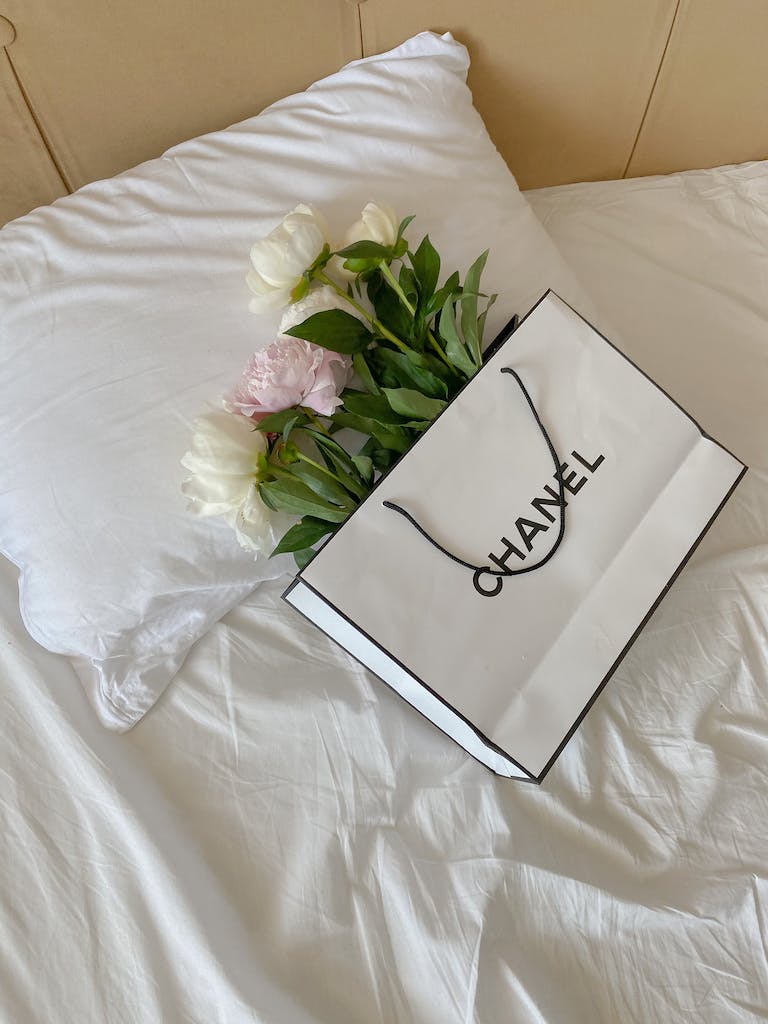Why Are All the Luxury Brands French?
It would seem like France has completely dominated the luxury goods market, and it is true, France has many well known luxury brands. You most likely know them, Chanel, Louis Vuitton, Dior, Givenchy, Balenciaga, but why did they all come from France?
This is not simply a coincidence, France has deep historical roots in the luxury industry that stretch back to the ostentatious court of Louis XIV, where an emphasis on luxury goods and fashion became integral to French culture.
France has a huge market share in the luxury market because during the reign of Louis XIV, he installed many rules that made luxury a part of French lifestyle.
This historical precedence set the stage for French brands to become synonymous with splendor and exclusivity. The lavish lifestyles promoted by the French monarchy established a cultural foundation that solidified France, and particularly Paris, as the ideal breeding ground for luxury fashion.
Key Takeaways
- France has a deep-rooted history as the cultural powerhouse of luxury fashion.
- The French luxury industry benefits from governmental support and a strong historical image.
- Iconic French brands have become emblematic of the luxury sector through strategic marketing and branding.
the reign of Louis XIV Established France as a luxury hub

The reign of Louis XIV, known as the Sun King, was integral to the development of France as a luxury powerhouse. He was fascinated with luxury and ordered that the French Royal Court at Versailles wore only the best outfits in all of france, setting the standard for luxury across Europe.
Louis XIV, ensured that the luxury goods industry was supported by the people and fostered an environment where craftsmanship thrived. He was able to create an environment where tailors, perfumers, jewelers and furniture makers were held in esteem which pushed them to achieve the pinnacle of artistry and exquisiteness.
Important to this era was the creation of guilds, which regulated trades and protected the secrets of their crafts. The influence of these guilds ensured that French luxury goods were not only of exceptional quality but also unique in their design and craftsmanship, paving the way for the luxury brands we recognize today.
So The Art Of French Living Became Trendy
Louis XIV therefore also popularized the art of french living. French luxury is often synonymous with the fashion houses and couture labels that dominate the global conversation: think Chanel, Dior, and Louis Vuitton.
However, the French luxury lifestyle extends well beyond the runways of Paris, touching various facets of everyday life and forming a comprehensive luxury ecosystem. At its heart lies the art de vivre, a cultural concept that reflects a taste for fine arts and the pursuit of an elegant and pleasurable way of life.
During the time that he reigned, women and men became more excited to meet at the finest cafes, that were once not as decorated. It became the norm to have beautiful presentations, in food, fashion and places.
In the realm of gastronomy, French cuisine is celebrated worldwide, with an emphasis on quality ingredients, exquisite flavors, and sophisticated presentation. French wines are also a staple of the luxury lifestyle, coming from renowned regions like Bordeaux and Champagne. This appreciation for the culinary arts is seen as integral to the art de vivre, serving as a representation of refinement and social pleasure.
Interior design is another sector where French influence shines. French furniture and home décor echo a tradition of craftsmanship and elegance. Iconic to this is the Baroque and Rococo periods with their opulent designs, which still inspire modern French luxury interiors.
The global marketing of the French art de vivire leverages these cultural associations, promoting not just products but a desirable and aspirational way of life. This philosophy weaves together the material with the experiential, selling a dream that is at once tangible in a finely crafted accessory and intangible in the pleasure derived from a perfectly balanced glass of wine. French luxury is, therefore, not just an industry but a narrative that continues to captivate the global imagination.
French Government Supports the Luxury Fashion Industry

The French government has long recognized the value of the luxury fashion industry, considering it an integral part of the nation’s cultural heritage and economic strength. Government Perks have significantly contributed to fostering an environment where luxury brands can thrive. Initiatives such as funding and legislation reflect the commitment to sustaining this sector.
Governmental policies have been instrumental in nurturing luxury brands. An example is the Economic Support with substantial financial backing. Figures reported in the fashion industry indicated that in 2016, the sector generated 617,000 direct jobs, underscoring its economic importance.
They also protect the luxury industry very seriously, and fight the counterfeit industry because of how it affects the French economy. The French Customs authorities are vigilant in their efforts to curb the importation and distribution of counterfeit products.
If you are found carrying a counterfeit luxury bag into France, several things could happen, depending on the circumstances. They could confiscate the counterfeit item or fines could potentially reach up to twice the retail value of the genuine article. Can you imagine paying up to $60,000 in fines or more for carrying a fake hermes bag?
France was the birthplace of haute couture

Haute couture, the creation of exclusive custom-fitted clothing, was born in Paris in the mid-19th century. The term itself means “high sewing” or “high dressmaking” and became synonymous with French craftsmanship and unparalleled quality.
Charles Frederick Worth is often cited as the “father of haute couture,” establishing the first true haute couture house in Paris. Worth’s approach involved creating unique, hand-crafted pieces that would shape the fashion industry profoundly.
In the 19th and early 20th centuries, several iconic fashion houses emerged, solidifying France’s position as the center of the luxury fashion world:
Louis Vuitton, known initially for travel-focused luggage, expanded its offerings to represent a wider range of luxury goods.
Chanel, founded by Gabrielle “Coco” Chanel, revolutionized women’s fashion with her timeless designs and emphasis on comfort combined with elegance.
Christian Dior took the world by storm with the introduction of the “New Look” in 1947, which redefined women’s post-war fashion.
Another notable house, Lanvin, established by Jeanne Lanvin, has been a significant player in the luxury fashion sphere since its inception, known for its intricate trimmings and embroideries.
Yves Saint Laurent later maintained this legacy of French luxury, pushing the boundaries of fashion with innovative designs that captured the essence of modernity and empowerment.
These French ateliers expanded and remain popular till today because for their meticulous attention to detail and use of high-quality materials. Renowned for their artisanal craftsmanship, French goods are known to be often handcrafted by skilled artisans, with techniques passed down through generations. This emphasis on quality is not only a tradition, but also a stringent standard that is maintained to keep the reputation of French luxury brands at its peak.
Major Players in the Luxury Sector
The French luxury landscape is dominated by conglomerates and individual brands alike, with prestigious names leading the sector in fashion and beyond. When conglomerates use brands to work together, they establish a fine tuned ecosystem that makes it hard to break, and allow other brands from entering the market.
LVMH (Moët Hennessy Louis Vuitton) and Kering are two colossal conglomerates making a significant impact on the global luxury market. Notably, LVMH, led by Bernard Arnault, boasts a portfolio that includes over 70 distinctive Houses. With powerhouse brands like Louis Vuitton, Celine, and Givenchy, this group consolidated luxury at an impressive scale, reporting sales growth in recent years.
| Conglomerate | Key Brands | Notable Figures |
|---|---|---|
| LVMH | Louis Vuitton, Celine, Givenchy | Bernard Arnault |
| Kering | Saint Laurent, Balenciaga | François-Henri Pinault |
Kering, on the other hand, stands as a rival powerhouse, with renowned labels under their umbrella such as Saint Laurent, demonstrating a strong presence in high fashion.
Influential Designers and Fashion Icons
The success of French luxury brands is also deeply intertwined with the contributions of influential designers and fashion icons. Jean Paul Gaultier, for example, has brought innovative designs to the table, leaving an indelible mark on the industry.
Meanwhile, legendary figures like Audrey Hepburn have helped elevate the status of designer clothes by donning outfits from French labels in various films, thus bridging the gap between motion picture glamour and haute couture.
Designers and brands often become synonymous, their personalities and creative vision driving the narrative and appealing to consumers across generations. Hermès, albeit being an independent entity compared to LVMH and Kering, thrives on its reputation for exclusivity and high-end craftsmanship, solidifying its position among the major players.
The Art of Exclusivity and Waitlists
French luxury brands often cultivate an aura of exclusivity by carefully controlling supply and fostering high demand. For example, a brand might release a limited number of products or create waitlists for their most coveted items. This scarcity drives desire and reinforces the brand’s elite status. Customers on waitlists feel a sense of anticipation and privilege, which enhances the brand’s perceived value.
French luxury conglomerate LVMH often employs these strategies. They also support emerging talent through the LVMH Prize, which not only promotes innovation but also preserves exclusivity by associating with high-caliber, upcoming designers.
Global Reach and Adapting to Markets
In expanding their global reach, luxury brands from France adapt their marketing strategies to cater to the preferences of different markets. For instance, when entering China, a key luxury market, brands may integrate traditional Chinese elements into their advertising campaigns or adapt their product lines to appeal to local tastes, all without compromising their core identity.
Advertising efforts by these brands are extensive and meticulously planned, utilizing high-profile campaigns and celebrity endorsements to convey their message. They present an image that customers aspire to attain—not just products, but a lifestyle.






